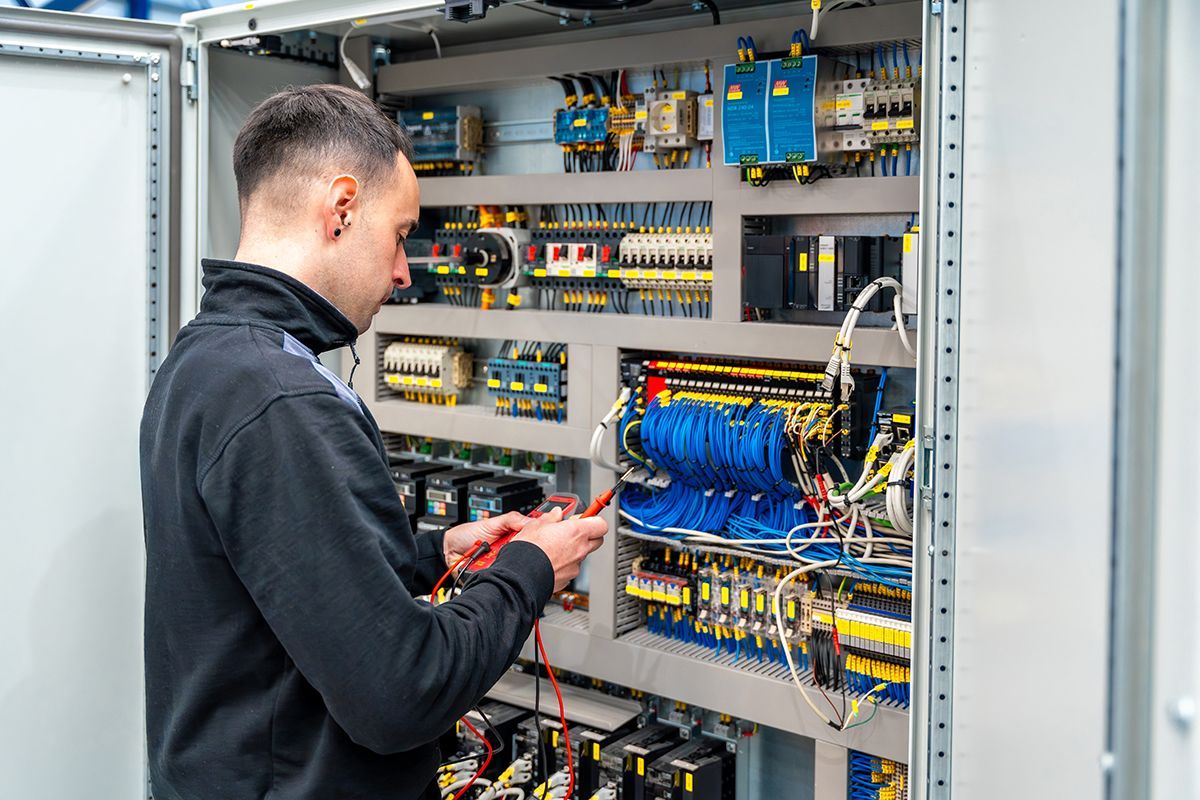Control cabinet construction in practice: standards, timing, hardware, and documentation

Standards, basic planning, hardware architecture, and documentation are constants in every automation project. In practice, however, it is precisely these building blocks that are decisive for the stability, safety, and efficiency of a system.
In the second part of our conversation, Alexander, Head of Hardware Engineering in the
Process Automation division at cts, explains how standards actually affect everyday work, why the right timing for hardware engineering has a decisive impact on the course of a project, why a solid hardware basis is indispensable for any software, and what role integrated documentation plays in day-to-day project business.
EN 61439, ATEX, Machinery Directive—what does this really mean in everyday life?
Abbreviations such as EN 61439, ATEX, or Machinery Directive seem like a jungle of paragraphs at first glance. Everyone knows standards from the cover sheet—but what matters is their implementation in everyday life.
“Ultimately, it's about ensuring that the system does what it's supposed to do and that the control cabinets deliver what they promise – safely and reliably. The standards are not an end in themselves. They help us to ensure exactly that,” explains Alexander.
Things get exciting when requirements contradict each other or can be interpreted differently. “This happens more often than you might think. But the goal is the same for everyone: safety and state-of-the-art technology. In everyday life, this means not just citing standards, but implementing them. And doing so in such a way that the system ultimately works – technically, formally, and in operation. That is precisely the requirement."
Who needs you - and when?
The role of hardware engineering goes far beyond mere supply. Planning, implementation, and contributing ideas—ideally, this should start early on.
“Ideally, this should start in the basic design phase. That's where we can contribute the most – for example, by developing concepts for control cabinets, working out typical designs for measuring devices, or assisting in the selection of the appropriate PLC, SSPS, or control system,” says Alexander.
“If such fundamentals are in place early on, the actual control cabinet planning and also the overall planning of the system can be made much more efficient. It saves time, reduces changes during the ongoing project – and creates a clear structure right from the start.”
Many people talk about software - how do you explain the relevance of hardware?
In the discourse on digitization and optimized processes, software is often in the spotlight. But without functioning hardware, everything remains theory.
“One is useless without the other - both areas need each other,” says Alexander. "No matter how well thought-out the software is, if the hardware behind it doesn't work, everything remains theory.
In our field, hardware doesn't start with the RIO box, but much earlier: with the medium-voltage transformer. From there, it goes via the low-voltage main distribution board to the consumers – i.e., server cabinets, PLC, SSPS, or control system switch cabinets, power and drive technology – all the way down to the field level. Only when all of this is reliably in place can the software really come into its own. And that's exactly why good hardware planning is not an accessory, but a basic requirement."
What role does documentation play in everyday life?
Documentation is required by law - but in practice, it is only helpful if it is not a side task but part of the process.
“Documentation is not a side task for us – it is part of the planning process,” emphasizes Alexander. "Our self-developed database is central to this. It forms the technical basis right from the start: for example, we start by importing the list of measuring points. This is maintained there, IOs are assigned, field devices are specified – and the relevant documents are also generated from precisely this data.
This means that changes in the project are traceable, adjustments can be made at any time, and the documentation remains up to date without us having to touch it twice. This turns a chore into a real labor-saving device. And traceability is guaranteed at all times – for us, for the customer, and for the auditors."
Whether standards, basic design, hardware, or documentation - ultimately, it always comes down to ensuring that systems can be operated reliably, safely, and in line with the latest technology. Standards are not an end in themselves, but rather guidelines that provide orientation. Early involvement of hardware engineering shortens planning phases and reduces changes. Hardware forms the indispensable basis of every digital solution. And documentation becomes valuable when it is an integral part of planning.
If you would like to learn more about how we implement hardware engineering in everyday project work, read the first part of the interview – or contact us directly.


